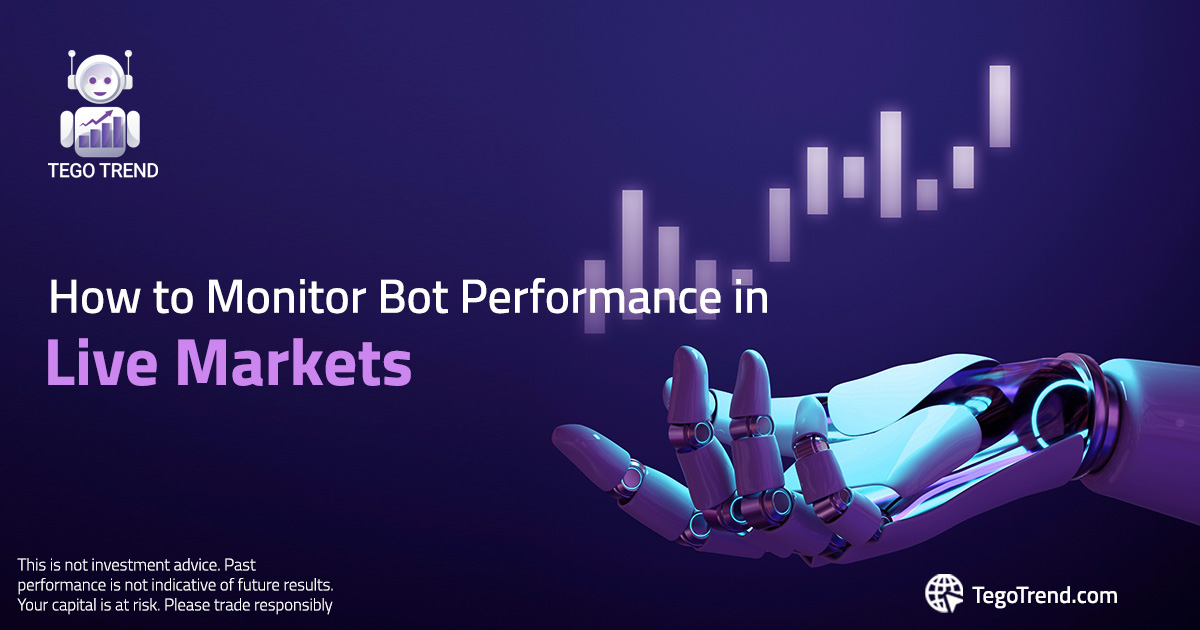How to Monitor Bot Performance in Live Markets
Introduction
In recent years, financial markets have witnessed a significant rise in the use of automated trading technologies, especially “bots” that execute trades without direct human intervention. However, the success of any trading strategy is not determined solely by running a bot. It largely depends on the ability to continuously monitor its performance in live markets. Careful monitoring ensures data-driven decisions, reduces risks, and enhances both stability and profitability.
Why Is Monitoring Bot Performance Essential?
A bot’s performance is not fixed—it fluctuates based on several factors, including market changes, economic news, and the behavior of different currency pairs or assets. Through ongoing monitoring, traders can:
Assess the effectiveness of the strategy.
Detect flaws in entry/exit timing.
Understand how the account handles volatility.
Apply timely adjustments and improvements.
Key Metrics to Track
1. Net Profit
Represents the difference between total profits and losses after costs. It is the primary indicator of whether the bot delivers positive long-term results.
2. Maximum Drawdown (Max DD)
Measures the largest account loss over a specific period. This reveals the risk level associated with running the bot under varying market conditions.
3. Win Rate
The ratio of winning trades to total trades executed. Ideally, this should exceed 50%, though the profit size per trade must also be considered.
4. Risk/Reward Ratio
Indicates potential profit versus potential loss in each trade. Higher ratios signal more efficient and safer strategies.
5. Number of Trades Executed
A larger trade sample gives a more accurate picture of the bot’s performance across time. However, trading activity should come from a structured strategy, not random signals.
6. Performance Consistency
Stable, steady profits suggest a balanced approach. Highly volatile performance, even if profitable, may point to excessive and unmanaged risk.
Tools for Monitoring Performance
Several tools can help track and evaluate bot performance effectively:
Built-in platform reports: Most trading platforms include reporting features.
Independent analytics tools: Services like Myfxbook and FXBlue provide detailed performance reports, charts, and comparisons.
Custom tracking: Excel or Google Sheets can be used to design tailored analytics aligned with specific account objectives.
Tips for Smarter Monitoring
Review performance periodically—weekly or monthly evaluations are best.
Don’t rely on a single metric; combine several indicators for better insights.
Compare bot performance during different market conditions (e.g., normal sessions vs. high-impact news).
Pause the bot for reassessment if unexplained underperformance occurs.
Test bots on demo or cent accounts before applying them to live, large accounts.
Conclusion
Monitoring bot performance in live markets is a critical step for any trader aiming for stable, profitable results. By using clear metrics and analyzing performance data intelligently, traders can refine strategies, reduce risks, and achieve greater consistency.
Automated trading is not a “set and forget” process—it requires ongoing supervision and continuous development to succeed in the long run.


